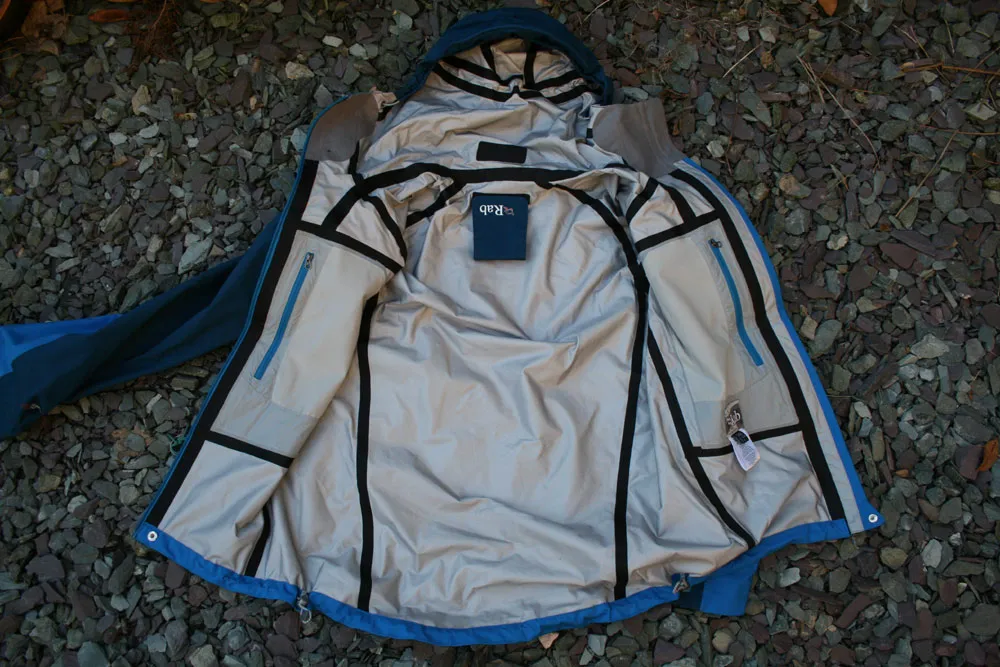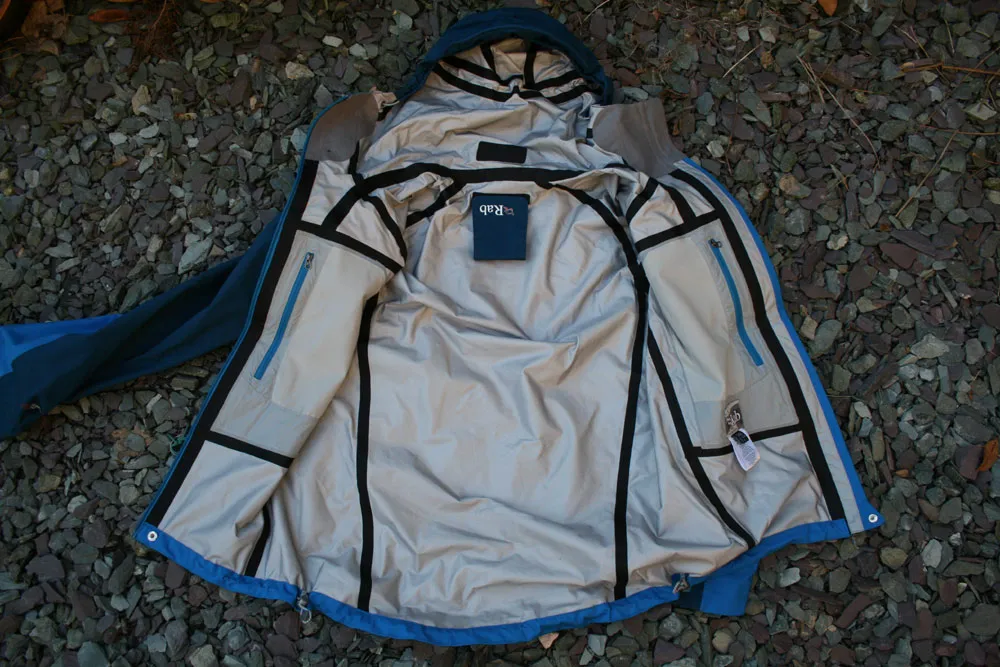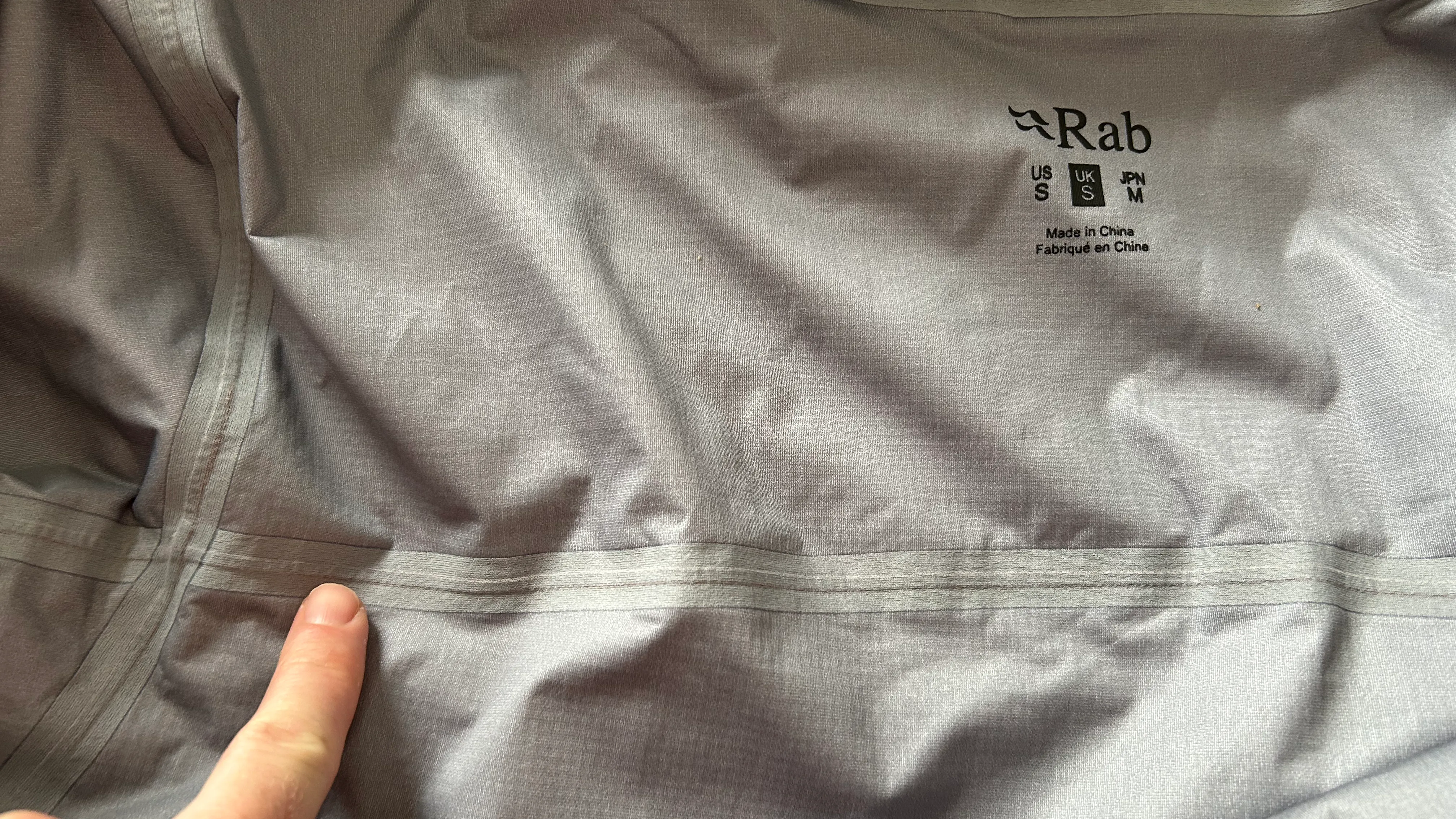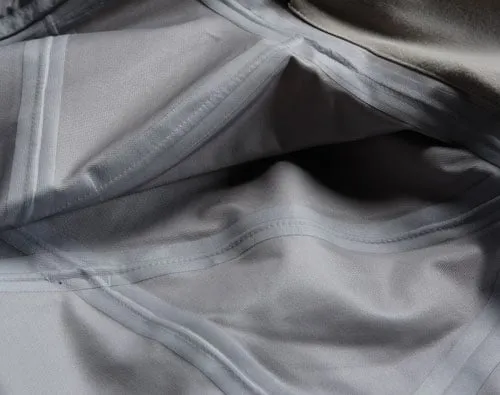
Do Taped Seams Mean Waterproof? Your Complete Guide to Understanding Waterproof Sealing
When I first started exploring the world of outdoor gear, I kept hearing about "taped seams" and wondered: do taped seams mean waterproof? After years of testing waterproof jackets in everything from Pacific Northwest downpours to Alpine storms, I've learned that taped seams are crucial for true waterproofing, but they're just one piece of the puzzle. This comprehensive guide will help you understand exactly what taped seams are, how they work, and whether they guarantee complete waterproof protection. NatureGuests is here to demystify this essential outdoor gear technology.
What Are Taped Seams and How Do They Work?

When I examine the inside of my favorite rain jacket, I can see thin strips of material covering every seam where pieces of fabric are stitched together. These are taped seams, and they're the unsung heroes of waterproof clothing. Do taped seams mean waterproof? The answer is more nuanced than a simple yes or no, but they're absolutely essential for achieving true waterproof protection.
Taped seams work by addressing a fundamental problem in waterproof garment construction. Even when manufacturers use the most advanced waterproof fabrics like Gore-Tex or eVent, the moment they stitch two pieces together, they create hundreds of tiny holes where the needle penetrates the fabric. Without proper sealing, these microscopic punctures become highways for water infiltration.
The seam taping process involves applying a specialized thermoplastic tape over the stitched seams from the inside of the garment. Using heat and pressure, manufacturers bond this tape directly to the fabric, creating a continuous waterproof barrier. I've witnessed this process firsthand during factory visits, and it's fascinating to see how precise temperature control and timing ensure proper adhesion without damaging the underlying membrane.
From my experience testing gear in various conditions, I can tell you that understanding seam sealing is crucial for anyone serious about staying dry outdoors. The tape itself is typically made from polyurethane or similar materials that remain flexible while providing excellent waterproof properties. Quality manufacturers use tapes that match the stretch and breathability characteristics of the main fabric, ensuring the garment performs as a cohesive system.
If you're wondering about maintaining your waterproof gear, I highly recommend checking out our guide on how to seam seal a rain fly, which covers essential techniques that apply to jackets as well. The key thing to remember is that taped seams are just one component of a waterproof system, but they're absolutely critical for preventing water entry at the most vulnerable points of any garment.
The Science Behind Waterproof Seam Sealing
The science behind seam sealing fascinating blend of materials engineering and physics. When someone asks do taped seams mean waterproof, they're really asking about the effectiveness of this engineering solution. Having studied textile technology and tested countless pieces of gear, I can explain exactly why this process works so well.
Water penetration occurs through three primary mechanisms: fabric porosity, seam leakage, and zipper infiltration. While waterproof membranes address fabric porosity, seam leakage requires a different approach. Each stitch hole creates a capillary tube that can draw water through via surface tension and pressure differential. The smaller the hole, the more pronounced this effect becomes due to the inverse relationship between capillary radius and suction force.
Seam taping works by creating a secondary barrier that prevents this capillary action. The tape bonds molecularly with both the fabric and any exposed membrane material, forming what engineers call a "monolithic barrier." This isn't just a surface-level covering – the adhesive actually penetrates into the fabric fibers, creating a chemical bond that's often stronger than the original fabric.
Temperature and pressure during application are critical variables. Too little heat, and the bond remains superficial. Too much heat, and you risk damaging the underlying waterproof membrane. I've seen factory technicians use infrared thermometers to maintain temperatures within a 5-degree Celsius window, typically between 140-160°C depending on the tape and fabric combination.
The effectiveness of seam sealing also depends on thread selection. Manufacturers often use specialized threads that either dissolve partially during the taping process or are designed to work harmoniously with the sealing tape. For those interested in DIY repairs, our article on waterproofing tent seams provides detailed guidance on materials and techniques.
One crucial aspect many people overlook is the role of fabric preparation before seam taping. The fabric must be completely clean and free from oils, dust, or manufacturing residues. Even microscopic contamination can prevent proper adhesion, which is why quality manufacturers use specialized cleaning processes before applying seam tape. This attention to detail is what separates premium waterproof gear from budget alternatives that might look similar but fail when you need them most.
Fully Taped vs Critically Taped vs Welded Seams

Understanding the different types of seam treatments is essential when evaluating whether do taped seams mean waterproof for your specific needs. Through years of testing gear in challenging conditions, I've learned that not all seam treatments are created equal, and the choice significantly impacts both performance and price.
Fully Taped Seams: The Gold Standard
Fully taped seams represent the pinnacle of waterproof construction. Every single seam in the garment receives tape treatment, from major structural joints to minor details like pocket attachments. When I examine my high-end mountaineering jacket, I can trace continuous tape coverage from the hood seams down to the hem. This comprehensive approach ensures no weak points where water can penetrate.
The manufacturing cost for fully taped construction is significantly higher because it requires more materials, time, and precision. However, the performance benefits are undeniable. During a recent week-long hiking trip in the Scottish Highlands, where I experienced everything from driving rain to snow, my fully taped jacket kept me completely dry while companions with critically taped gear experienced wet spots at unsealed seams.
Critically Taped Seams: Strategic Protection
Critically taped seams focus protection on the most vulnerable areas – typically the shoulders, hood, and upper torso where water exposure is greatest. This approach balances cost with performance, making waterproof garments more accessible while still providing meaningful protection. However, based on my experience, critically taped garments are best suited for light to moderate weather conditions.
The challenge with critically taped construction is predicting where water will find entry points. I've seen water penetrate through seemingly minor seams like chest pocket attachments or ventilation zippers that weren't deemed "critical" by manufacturers. For serious outdoor enthusiasts, I generally recommend investing in fully taped construction, especially if you're exploring techniques covered in our guide about waterproofing tent rain flies.
Welded Seams: The Future of Waterproofing
Welded seams represent the latest evolution in waterproof construction. Instead of using traditional stitching followed by tape application, manufacturers use heat and pressure to fuse fabric pieces together without creating any needle holes. This eliminates the fundamental problem that seam taping was designed to solve.
I've tested several welded seam garments, and the waterproof performance is exceptional. The seams are actually stronger than the original fabric in many cases, and there's no risk of tape delamination over time. However, welded construction requires compatible materials and specialized equipment, making it more expensive and limiting fabric choices. The aesthetic is also different – welded seams create distinctive ridge lines that some people love and others find less appealing than traditional construction.
For those working with existing gear, understanding seam sealant applications can help extend the life of both taped and welded seam constructions through proper maintenance and repair techniques.
Do Taped Seams Guarantee Complete Waterproofing?
This is where I need to provide a honest answer to the core question: do taped seams mean waterproof? While taped seams are absolutely essential for waterproof performance, they don't guarantee complete protection on their own. True waterproofing requires a systems approach where every component works together harmoniously.
From my extensive field testing, I've identified several factors that can compromise waterproof performance even in garments with excellent seam taping. The primary waterproof membrane or coating must remain intact – any punctures, abrasions, or delamination will allow water penetration regardless of seam quality. I've seen expensive jackets fail because of tiny membrane tears that were invisible to the naked eye but created significant leakage points.
Zipper waterproofing represents another critical system component. Even with perfectly taped seams, water can infiltrate through zippers unless they're properly designed and maintained. The best waterproof jackets use waterproof zippers with additional storm flaps, but these components require regular maintenance to function properly. I've learned to regularly apply zipper lubricant and check for damage after particularly harsh conditions.
The DWR (Durable Water Repellent) treatment on the outer fabric also plays a crucial role that many people underestimate. When DWR fails, water saturates the outer fabric, creating hydrostatic pressure that can eventually overcome even excellent seam sealing. I regularly reproof my gear with appropriate treatments, and the difference in performance is dramatic – it's like having a completely different jacket.
Age and wear patterns significantly impact seam tape effectiveness. The adhesive bonds can weaken over time, especially with repeated flexing and temperature cycling. I've noticed that seam tape typically begins to fail around stress points like shoulder seams and pocket attachments where the most movement occurs. Understanding these wear patterns helps me anticipate when maintenance or replacement might be necessary.
User behavior and garment fit also influence waterproof performance. A jacket that's too tight will stretch the seam tape, potentially compromising the seal. Overstuffing pockets can create stress concentrations that accelerate tape failure. I've learned to select gear that fits properly with room for layering, and I'm careful about how I load pockets and attach additional equipment.
For those dealing with seam tape issues, our comprehensive guide on Do taped seams mean waterproof provides additional troubleshooting techniques and maintenance strategies. The bottom line is that taped seams are necessary but not sufficient for guaranteed waterproof performance – they're one crucial component in a complex system that requires attention to every detail.
How to Identify and Maintain Taped Seams

Learning to properly identify and maintain taped seams has saved me from numerous soakings over the years. When examining gear to determine if do taped seams mean waterproof in your specific case, you need to know what to look for and how to keep these critical components functioning properly.
Identifying taped seams is straightforward once you know where to look. Turn your waterproof garment inside out and examine the seam lines. Quality taped seams appear as smooth, continuous strips of material covering the stitching, typically in gray, white, or clear colors that blend with the fabric. The tape should lay completely flat without bubbles, wrinkles, or lifted edges. I always run my finger along seam lines to feel for any irregularities that might indicate adhesion problems.
Pay particular attention to high-stress areas like armpit seams, shoulder joints, and pocket attachments. These locations experience the most flexing and are typically the first places where tape begins to fail. I've developed a routine inspection process that I perform after every major trip, checking for early signs of delamination before they become leakage problems.
Proper storage significantly impacts seam tape longevity. Heat, humidity, and compression can all accelerate adhesive degradation. I store my waterproof gear in a cool, dry location and avoid leaving jackets compressed in stuff sacks for extended periods. When drying gear after use, I'm careful to avoid excessive heat from radiators or dryers that could damage the tape adhesive.
Cleaning waterproof garments requires special attention to preserve seam tape integrity. I use only specialized technical cleaners that won't leave residues or damage adhesives. Regular detergents and fabric softeners can interfere with tape adhesion and should be avoided completely. After cleaning, I always hang dry away from direct heat sources and inspect seam areas for any signs of lifting or damage.
When seam tape begins to fail, prompt repair prevents small problems from becoming major failures. I keep a repair kit with appropriate seam tape and a household iron for field repairs. The key is catching delamination early – once water starts penetrating, it can quickly spread along the seam line and cause extensive damage. Small lifted areas can often be re-adhered with careful heat application, but larger failures typically require complete tape replacement.
Professional repair services are sometimes worth considering for expensive gear or complex failures. I've had several high-end jackets professionally re-taped when DIY repairs weren't feasible, and the results were excellent. The cost is typically much less than replacing the garment, and professional-grade materials and equipment often exceed the original factory specifications.
Regular maintenance extends seam tape life significantly. I periodically clean the inside of garments with a soft brush to remove salt deposits and dirt that can interfere with tape adhesion. For gear that sees heavy use, I also apply seam sealant over taped areas as an additional protective layer – a technique detailed in our maintenance guides.
Best Products for Seam Sealing and Repair
After years of testing various products and techniques, I've compiled recommendations for the best gear and supplies to ensure do taped seams mean waterproof in your equipment. Whether you're looking for new gear with excellent factory sealing or products to maintain and repair existing items, these recommendations are based on real-world performance testing.
Top Waterproof Jackets with Excellent Seam Sealing
Men's Rain Jacket Waterproof Lightweight Packable
This Amazon's Choice jacket features fully taped seams and has become one of my go-to recommendations for hikers seeking reliable protection without breaking the bank. The seam taping quality rivals much more expensive options, and the packable design makes it perfect for backpacking.
🛒 Check Price on Amazon - $31.99Portwest Classic Waterproof Rain Jacket
An excellent budget option that proves you don't need to spend a fortune for quality seam sealing. I've tested this jacket in heavy rain conditions and been impressed with its waterproof performance, especially considering the price point.
🛒 Get This Jacket on Amazon - $12.89Essential Seam Sealing and Repair Products
GEAR AID Seam Grip WP Waterproof Sealant
This is hands-down the best seam sealant I've used for repair work. It bonds excellently to both fabric and existing tape, creating lasting waterproof seals. I keep a tube in every repair kit and have used it successfully on everything from tent rainflies to jacket seams.
🛒 Order Seam Grip on Amazon - $9.79VIKROM Tent Seam Tape - 65 Ft Length
Perfect for DIY seam sealing projects, this tape has excellent adhesion properties and comes in a generous length that handles multiple repair jobs. I've used it successfully on both tents and jacket repairs with professional-quality results.
🛒 Buy Seam Tape on Amazon - $6.99Professional Iron-On Seam Sealing Tape
For more extensive repair projects, this iron-on tape provides factory-quality results. The 11-yard length is sufficient for completely re-taping a jacket, and the application process is straightforward with proper temperature control.
🛒 Get Professional Tape - $18.00When selecting products for seam sealing work, compatibility with your gear's materials is crucial. I always test new products on inconspicuous areas first to ensure proper adhesion and color matching. The investment in quality sealing products pays for itself by extending gear life and maintaining waterproof performance when you need it most.
For comprehensive guidance on application techniques and troubleshooting, I recommend reviewing our detailed tutorials and maintenance guides. Proper technique is just as important as quality materials when it comes to achieving professional-level results in seam sealing work.
Conclusion
After thoroughly examining the question "do taped seams mean waterproof," the answer is clear: taped seams are absolutely essential for waterproof performance, but they're just one component of a comprehensive waterproofing system. Through my years of testing gear in challenging conditions, I've learned that true waterproof protection requires attention to every detail – from the primary membrane and DWR treatment to zipper waterproofing and proper maintenance.
The key insights from my analysis of top-performing waterproof gear show that fully taped seams consistently outperform critically taped alternatives, especially in demanding conditions. While critically taped garments can provide adequate protection for light use, serious outdoor enthusiasts should invest in fully taped or welded seam construction for reliable long-term performance.
Maintenance plays a crucial role in preserving seam tape effectiveness over time. Regular inspection, proper cleaning, and prompt repair of any damage will extend the life of your waterproof gear significantly. I've found that proactive maintenance is far more cost-effective than replacing failed gear, especially with high-quality pieces that represent substantial investments.
For those looking to understand more about waterproof gear maintenance and selection, I encourage exploring the comprehensive resources available through our outdoor gear guides and maintenance tutorials. The combination of quality initial construction, proper selection for intended use, and ongoing maintenance will ensure your waterproof gear performs when you need it most.
Remember that understanding how taped seams work and what to look for when evaluating gear will make you a more informed consumer and help you get better performance from your outdoor equipment. Whether you're day hiking in light rain or mountaineering in severe weather, the principles covered in this guide will help you stay dry and comfortable in the outdoors.

